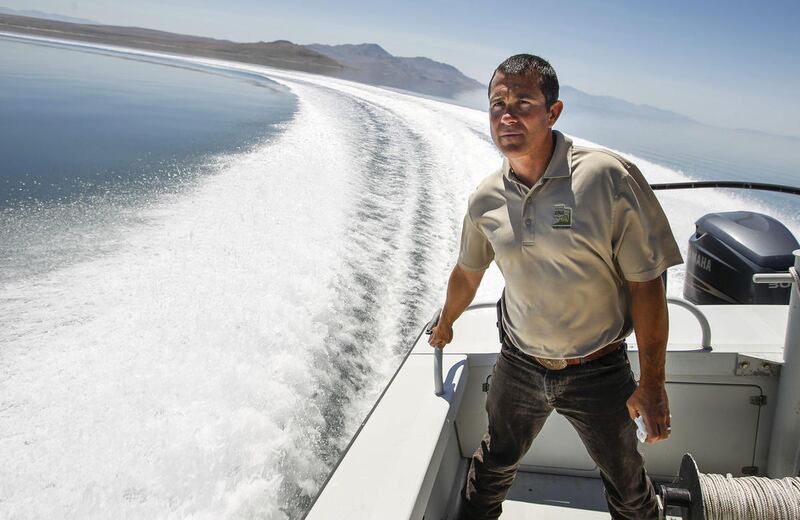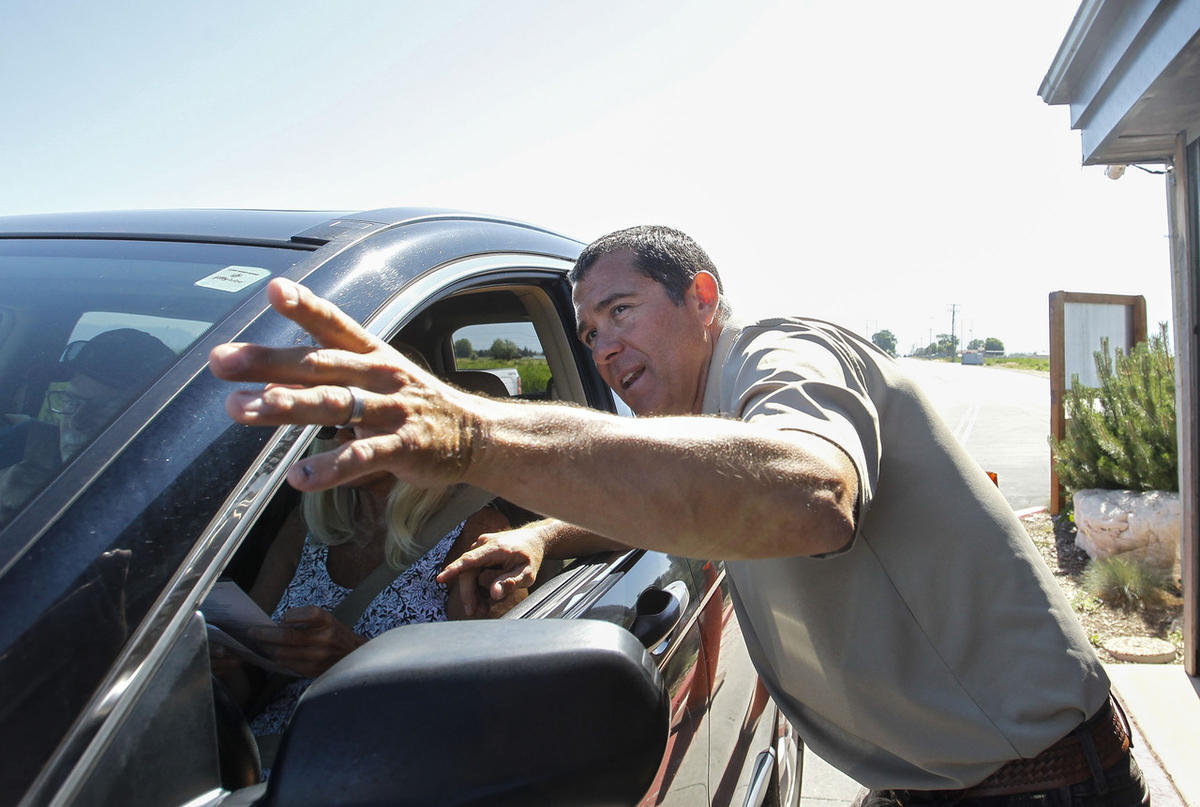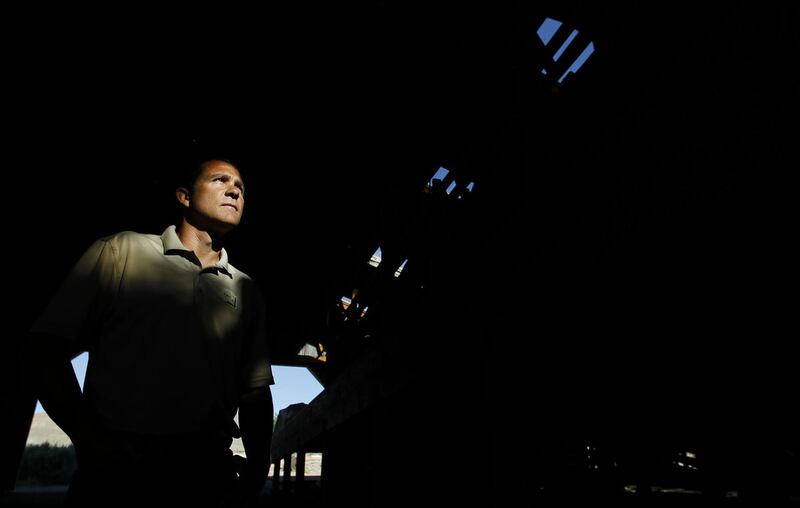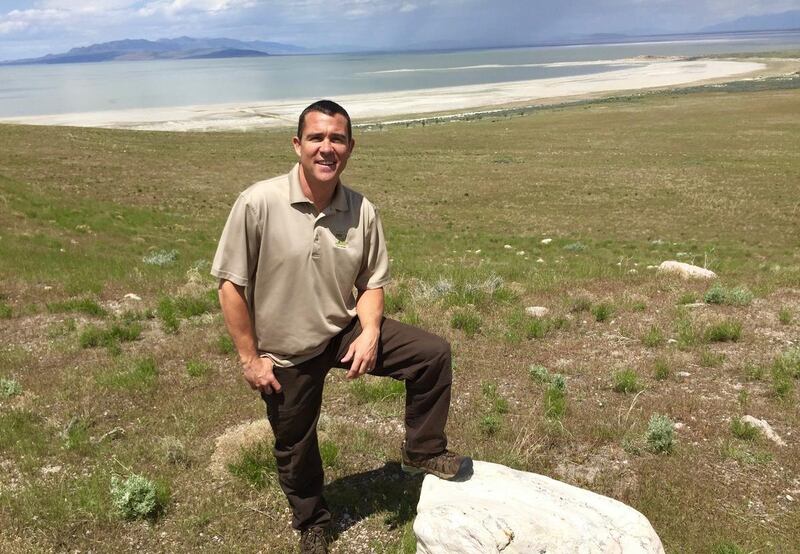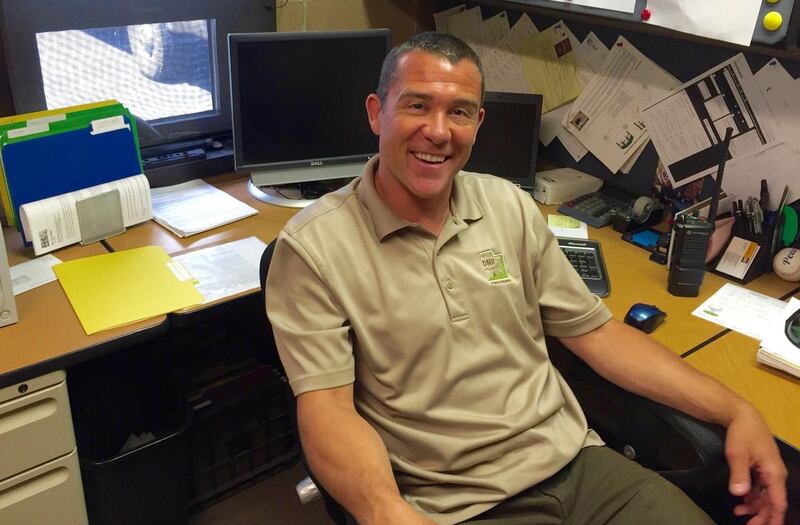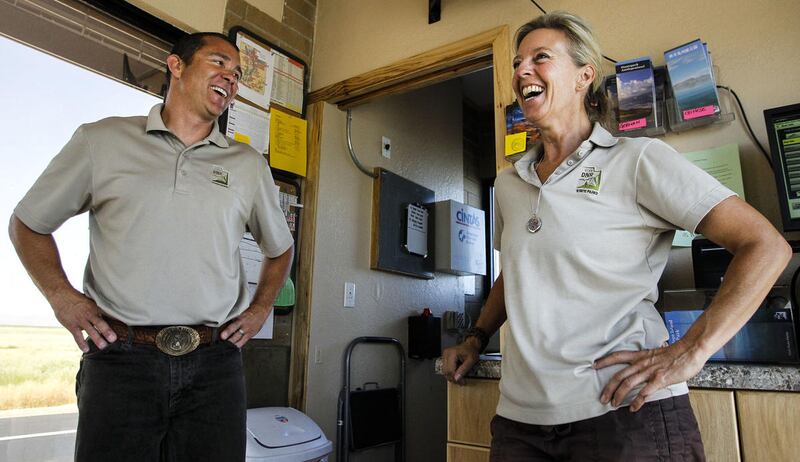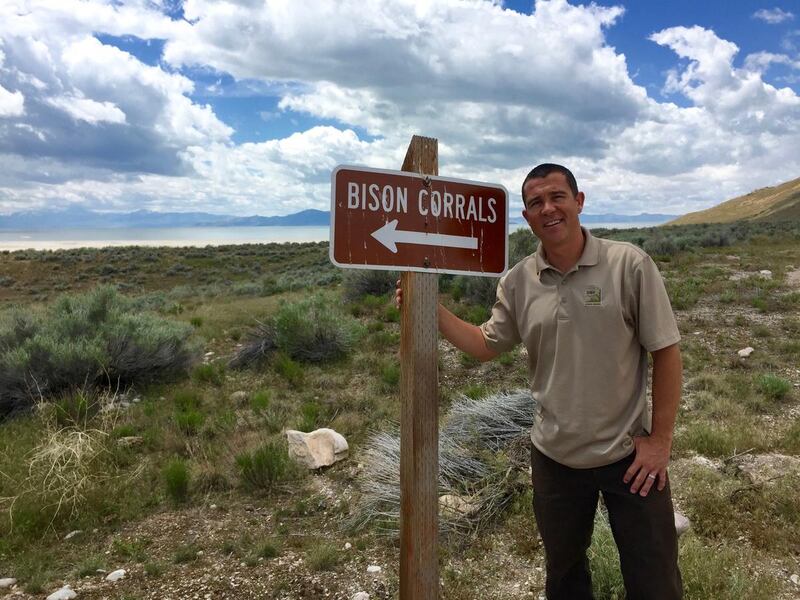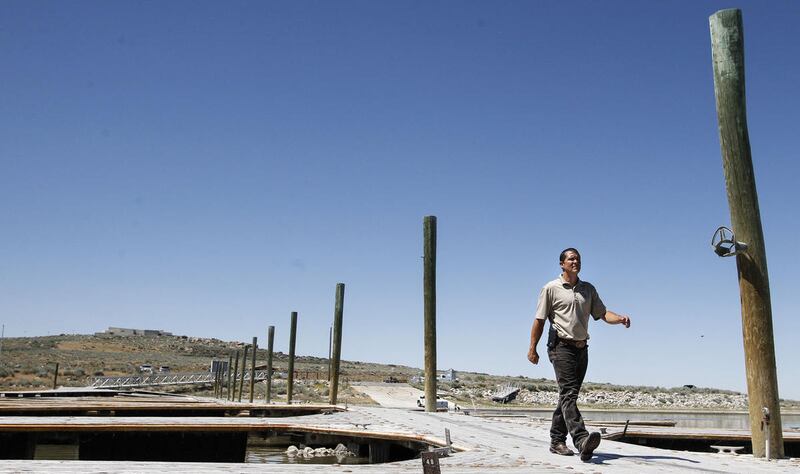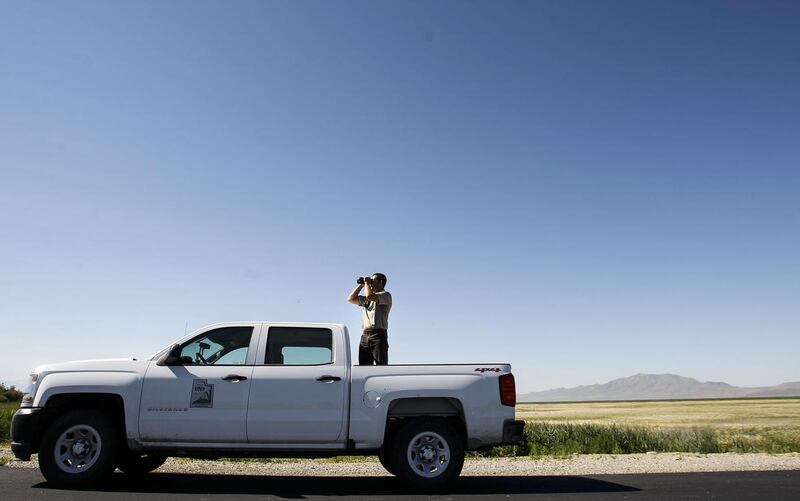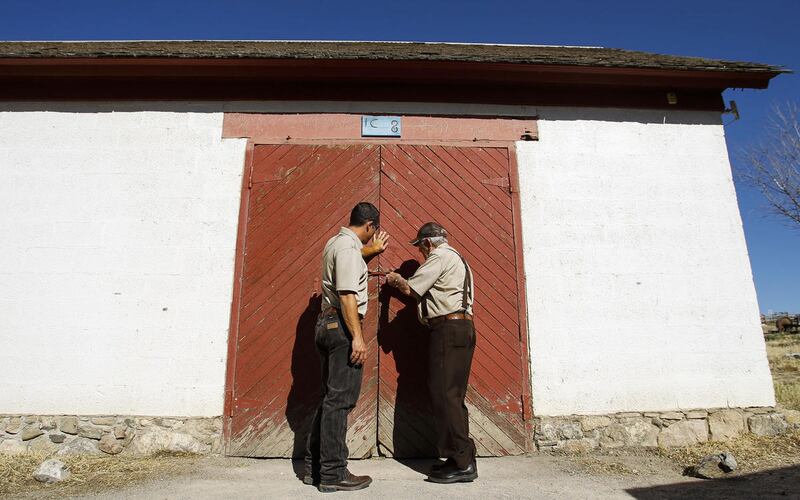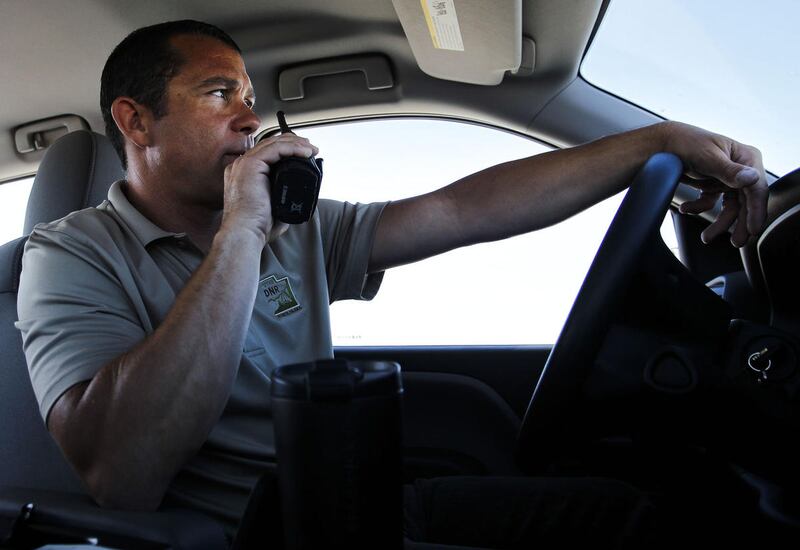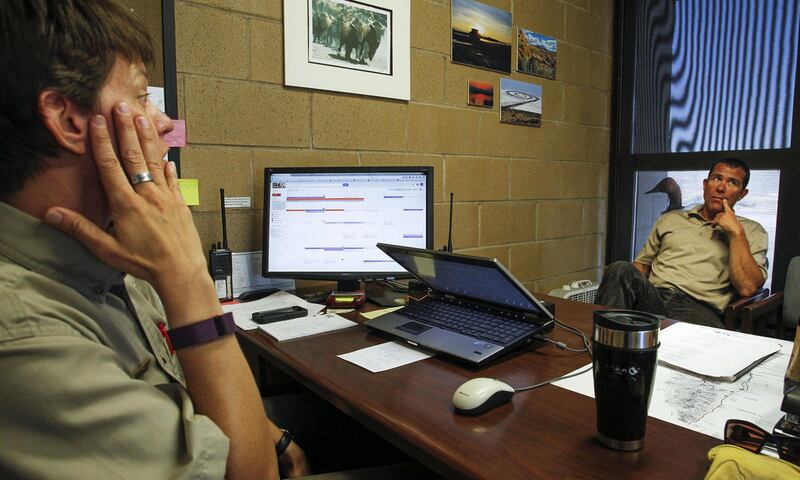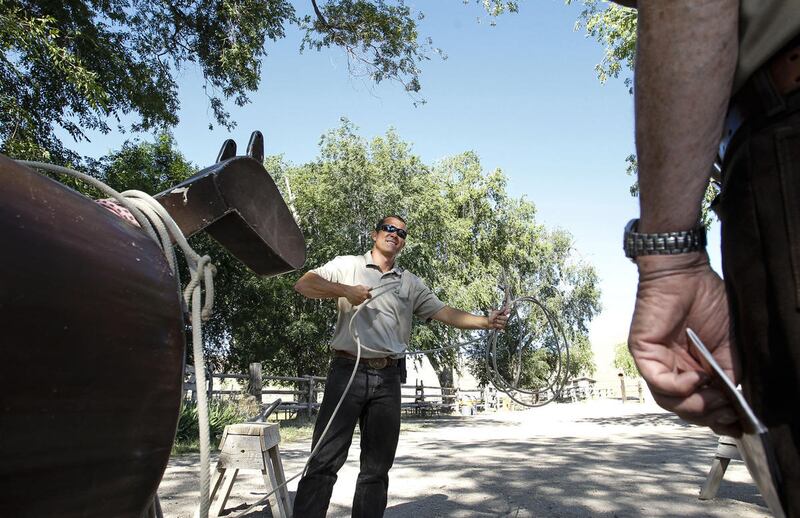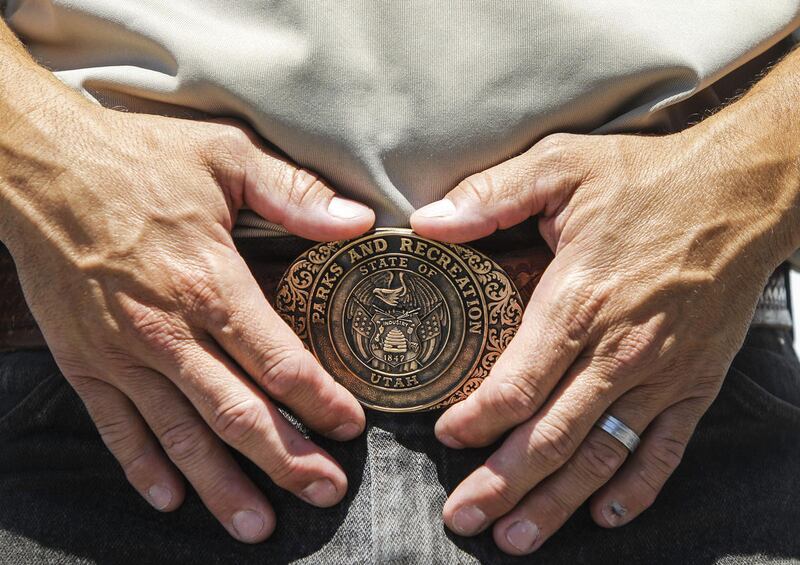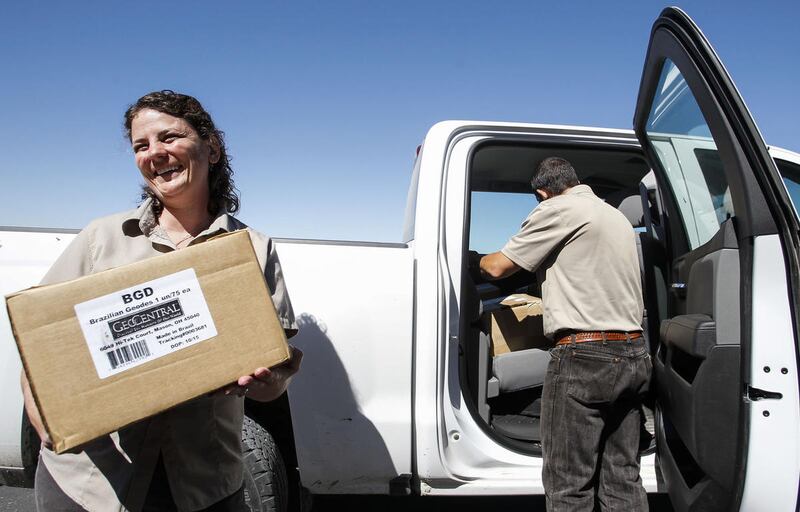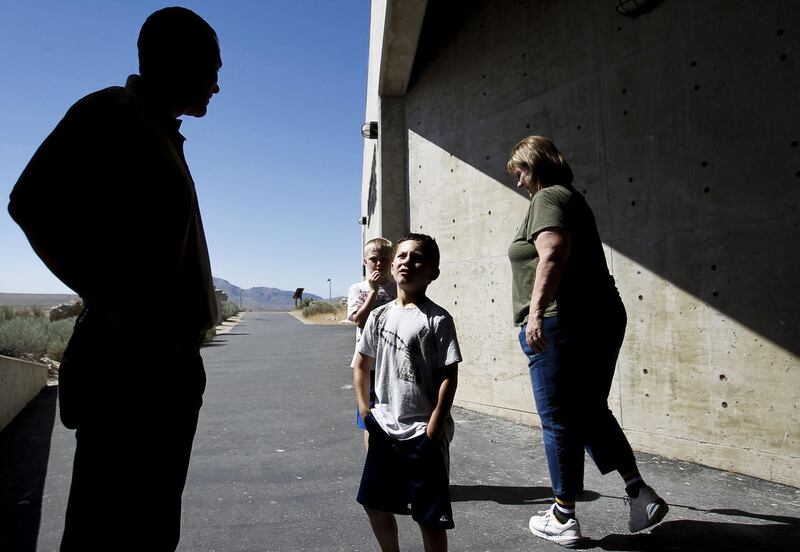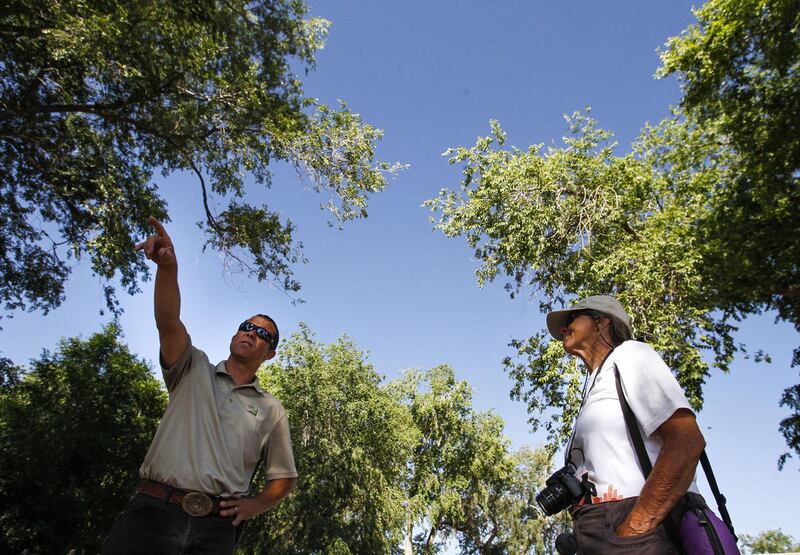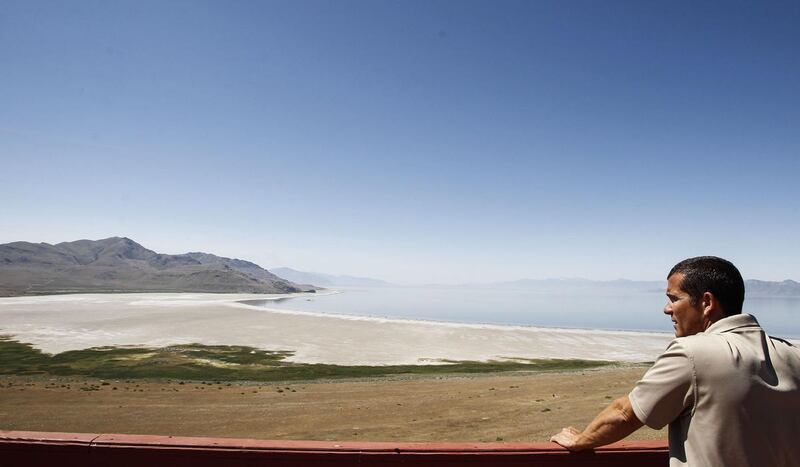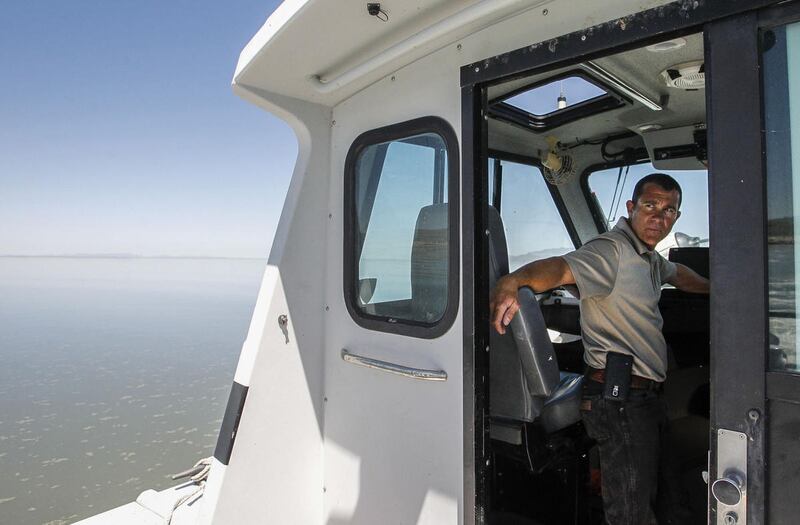I figured out what I wanted to do when I was just a kid, and heck, it came true. – Jeremy Shaw
ANTELOPE ISLAND STATE PARK — Jeremy Shaw was 10 years old and on a camping trip in western Wyoming with his two brothers and his dad when he had his brainstorm.
They were at a place called Lake Alice setting up camp when a backcountry ranger came by on his horse, a packhorse trailing, swung out of the saddle, sat down and commenced to talk about anything and nothing — what the fish were biting on, the weather, how their day was going, did they need anything.
As the ranger got back on his horse and left, this thought entered Jeremy’s young brain: That’s a job!
From that day on, he knew what he wanted to be when he grew up.
Thus motivated, after he graduated from Weber High School, he enrolled at Utah State University, majored in fisheries and wildlife management, and, between getting married and working at a tire store, got his degree in 1997.
Utah State Parks immediately offered him a full-time ranger job and, once he’d completed his required coursework at the police academy, posted him at East Canyon State Park above Morgan.
Just like that, he was living his dream.
His starting pay was actually less than he was making at the tire store. In his dreams, he’d neglected to consider just how much his dream job would pay, but his passion prevailed over paycheck.
He spent eight years as a park ranger and assistant park manager at East Canyon, four and a half years as park manager at Hyrum State Park above Logan, and in 2011, when he was just 37, he took over as park manager at Antelope Island State Park, one of the crown jewels in the Utah State Parks system.
In the five and a half years under his supervision, Antelope Island’s popularity has trended steadily up. Attendance has increased from 282,145 visits in 2011 to 380,611 in 2015. Of Utah’s 43 state parks, only Dead Horse Point State Park had more visits last year, and just barely, at 383,478.
This year, Antelope Island is already well on its way to over 400,000 visitors. On a sunny Sunday in March, it set a single-day record for visits when nearly 6,000 people crossed the 7-mile causeway from Syracuse to explore and enjoy the 28,000-acre island.
He recently sat down with the Deseret News to talk about all things Antelope Island.
DN: Thank you for your time today. So what’s it like, working at your dream job?
JS: I can’t tell you how many people tell me, "Oh, man, I wish I was doing what you’re doing," and I have to agree with them. I have the best job in the world for me.
DN: And money’s the big draw?
JS: (Laughs) Well, I wouldn’t work for free, but the people who work for state parks definitely don’t do it for the money. I think, honestly, it was probably eight years into my career when I finally got back to making what I was paid when I quit the job at the tire store that put me through college.
DN: What’s the big draw, then?
JS: I like to visit with people and see why they’re here, what they’re out doing, where they’re from, just talking to folks, and here I get to talk to people from all over the world because about 70 percent of our visitation comes from outside the local area. We get lots of people from overseas. Another big draw for me is getting to work with the team we have out here. I’ve got 14 full-time employees, and I like the camaraderie we have. We’re all working together at the same mission — to host the public.
DN: Any downside?
JS: I’d have to say the toughest part of the job is dealing with the various special-interest groups. Antelope Island is such a well-known place that there are lots of special-interest groups wanting a piece of it. Everybody wants to be served, and I understand that, but one park can only deliver so much. The best quote I ever heard on this subject was at an employee development school we had when I first started. I couldn’t tell you the speaker’s name, but I remember what he said. He said, “A good state park cannot be all things to all people, but a good state park system can.” So I try to adapt that here. There are things Antelope Island can be for people, but we can’t be everything to everyone.”
DN: People keep flocking to the island in ever-growing numbers. How do you account for that?
JS: They fall in love.
DN: What do they fall in love with?
JS: I’ve been asked that question thousands of times, and I think I finally have a pretty good answer. About three years ago we signed a memorandum of understanding with a section of the Great Wall of China. Representatives from China came to Utah looking to partner with somebody here, and the Utah Office of Tourism took them around the state letting them see all the different places. When they brought them here we took them on a boat ride on the lake and on a horse ride up on the hill, thanked them and sent them on their way. After they returned to China they sent word that they wanted to sign their memorandum with Antelope Island. The office of tourism said, “You mean Utah State Parks?” and they said, “No, we mean Antelope Island State Park.” So we worked it out. They came back over and signed the agreement. It’s a gesture of commitment to global natural resource protection and education. I asked the man from China who made the decision, "Why, out of all the beautiful places he’d seen, did he choose Antelope Island?" He said, “It is so peaceful and so wild that when you visit it changes your heart.” And I went, "Oh!" My jaw hit the floor. I told him. “I’ve spent three years here trying to figure out the answer, and you’ve been here three hours and you nailed it on the head.”
DN: Do you get a lot of repeat visitors?
JS: There’s a core group of people that come out over and over who are just dedicated to this place. The more time you spend here the more you love it. If you go out onto Buffalo Point and watch the sunset you’ll be hooked forever.
DN: How do you manage such a large area?
JS: We have a great staff, and we also have about 100 volunteers who show up just to help us run the place for free.
DN: What’s the island’s biggest draw?
JS: It’s the peace and solitude. When we do surveys that’s what almost always comes out on top. We’re so close to the Wasatch Front, and you come out here and it feels like the Wild West. It’s peaceful; it’s quiet; it’s rugged. There’s not a lot of noise. I would say if it’s nonmotorized outdoor recreation you’re after, whether it’s kayaking on the Great Salt Lake, hiking, biking, sailing, wildlife viewing, taking photographs, painting … this is the place.
DN: What about the bugs?
JS: The biggest misnomer with the island is that it’s buggy and it smells. We do get these no-see-um biting gnats and they’re miserable, but they’re only around for about 45 days in the spring. Once we hit 90 degrees and stay there for three days they die off and they’re gone. The other 320 days of the year, it’s just like anywhere else where you would go outside to recreate. The smell comes from the shoreline, a product of the brine flies and all the organic matter living around the lake deteriorating. The island doesn’t stink. Once you’re away from the shore it’s very pleasant.
DN: With attendance growing rapidly, do you worry about becoming too popular?
JS: We talk about that in every staff meeting: How do we manage overcrowding, how do we spread the visitors out, how do we get them here on different days? We want to maintain the experience; we’re actively working at that. It’s good that we stay pretty steady year-round. Summers are heavier, but our biggest day in the history of the island came this year on a Sunday in March and there was nothing special going on. It was just a good weather Sunday and every parking lot was full.
DN: What’s the craziest part of the job?
JS: The craziest thing I see out here every year is the bison roundup that we do in the fall. We invite the public to come out to help. You can bring your own horse or, if you don’t have one, you can contact our concessionaire and rent one for the day. Typically, the herd is on the south end of the island and we have to drive them north to the handling facility. We average about 250 riders, and anytime you get 250 people on horseback, some who have never seen a horse before, and point them in the same direction, at once it turns into quite a circus. As soon as I say, “Go” you’ll see horses running around with no riders and a little rodeo going on. Once we get it all sorted out and start moving north it works itself out, but the first is always quite a bit of fun.
DN: Sounds like the dream job is working out pretty well for you.
JS: I’m extremely lucky. I owe a lot to my mom and dad, Sandra and Gregory Shaw. They instilled that love for the outdoors and appreciation for the environment when I was very young. We did a lot of hanging out outside, setting up campfires and traveling all over the place. It’s pretty cool. I figured out what I wanted to do when I was just a kid, and heck, it came true.
Email: benson@deseretnews.com

